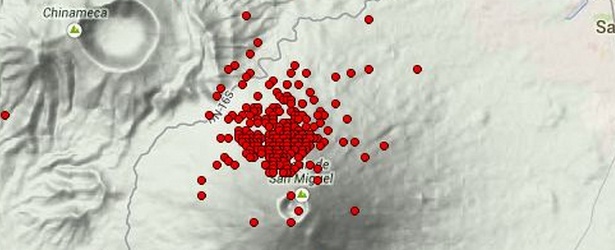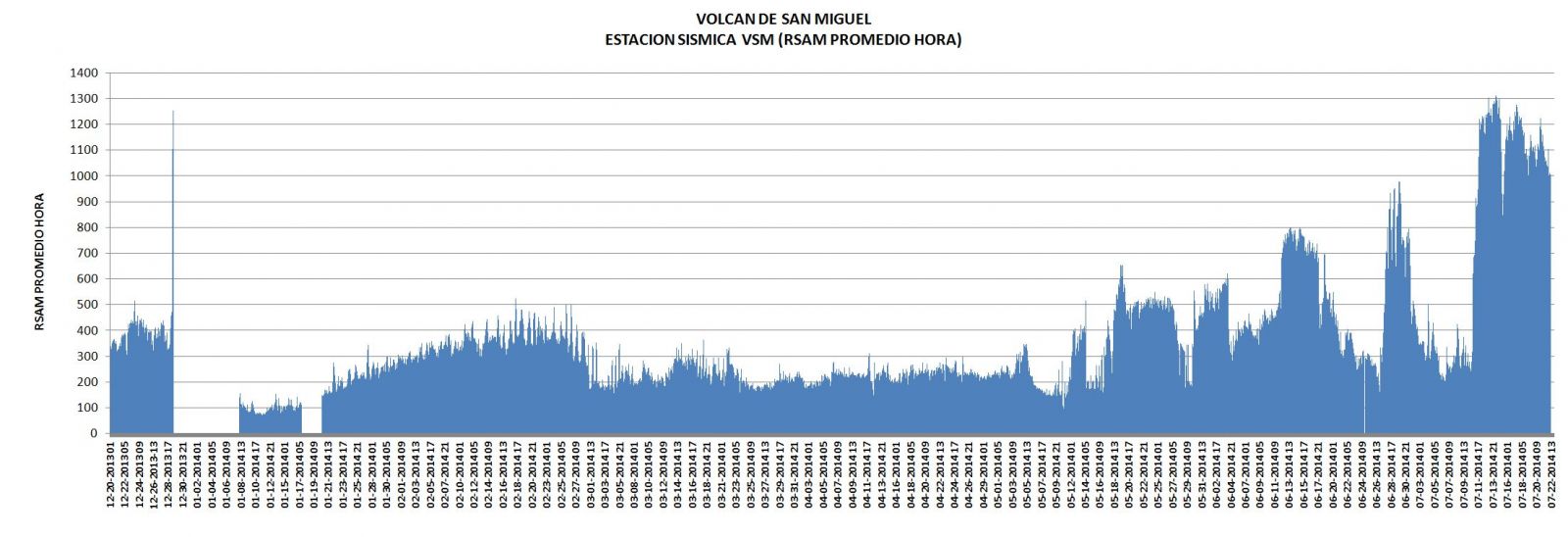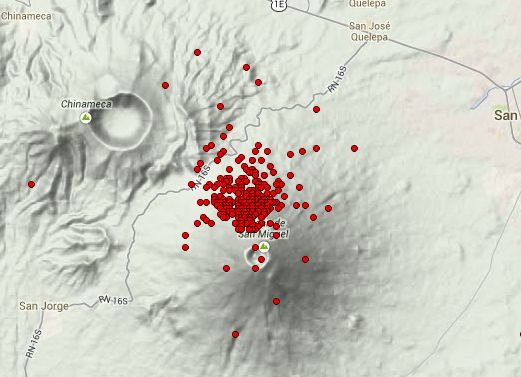High probability of new eruptive activity at Chaparrastique volcano, El Salvador

In yesterday's special report El Salvador's Ministry of Environment and Natural Resources (MARN) said that the seismic vibration at Chaparrastique volcano (San Miguel) remains at very high levels, 20 times above the normal. The volcano continues to produce important gas emissions as well as occasional small ash explosions.
These levels of seismic vibration and continuous emission are indicators that there is a high probability of another eruptive activity in the central crater or flanks. MARN said it should be mentioned that the geological process may last for months or even years.

Seismic vibrations recorded at Chaparrastique during 2014. Image credit: MARN

Epicenters of micro earthquakes located in the Chaparrastique volcano from January 27 to date. Image credit: MARN
After 11 years of sleep (2002 VEI 1) the volcano suddenly woke up on December 29, 2013 and sent a plume of ash about 9 km (30 000 feet) into the atmosphere. The ash settled both on the slope of the volcano, as seen here, and on nearby towns, forcing 5 000 people to evacuate.

The Advanced Land Imager (ALI) on the Earth Observing-1 (EO-1) satellite aquired this image of San Miguel volcano on January 15, 2014. (Credit: NASA Earth Observatory/Jesse Allen and Robert Simmon/Caption by Robert Simmon and Holli Riebeek)

San Miguel eruption, El Salvador on December 29, 2013. Image credit: NASA Aqua / MODIS
Geologic summary
The symmetrical cone of San Miguel volcano, one of the most active in El Salvador, rises from near sea level to form one of the country's most prominent landmarks. The unvegetated summit of the 2130-m-high volcano rises above slopes draped with coffee plantations. A broad, deep crater complex that has been frequently modified by historical eruptions (recorded since the early 16th century) caps the truncated summit of the towering volcano, which is also known locally as Chaparrastique.
Radial fissures on the flanks of the basaltic-andesitic volcano have fed a series of historical lava flows, including several erupted during the 17th-19th centuries that reached beyond the base of the volcano on the north, NE, and SE sides. The SE-flank lava flows are the largest and form broad, sparsely vegetated lava fields crossed by highways and a railroad skirting the base of the volcano. The location of flank vents has migrated higher on the edifice during historical time, and the most recent activity has consisted of minor ash eruptions from the summit crater. (GVP)
Featured image credit: MARN

Commenting rules and guidelines
We value the thoughts and opinions of our readers and welcome healthy discussions on our website. In order to maintain a respectful and positive community, we ask that all commenters follow these rules.